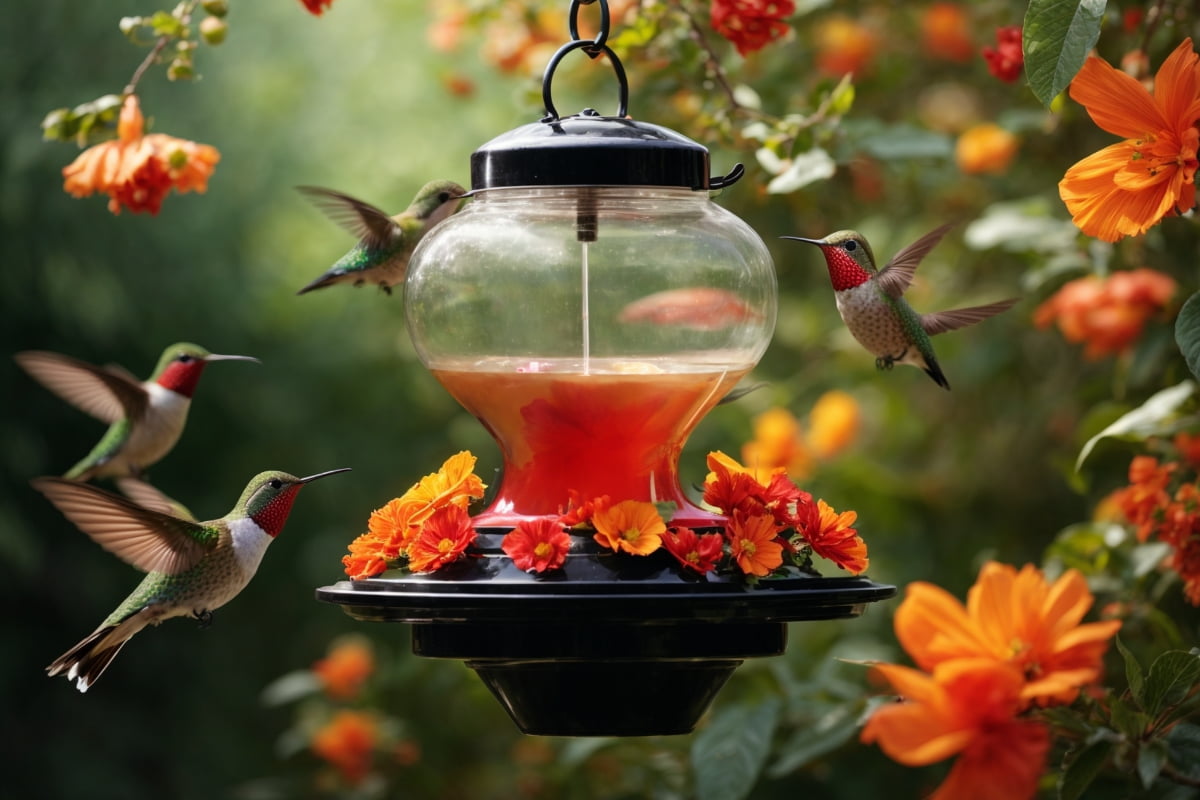Hummingbirds, with their vibrant colors and rapid wing movement, have captivated bird watchers for centuries. Many bird enthusiasts enjoy setting up hummingbird feeders in their gardens to attract these mesmerizing creatures. However, a common concern among hummingbird lovers is knowing the right time to take down the feeders.
Determining the optimal time to remove hummingbird feeders depends on various factors, including your location and the local hummingbird species. In areas with cold winters, it is recommended to remove the feeders by late October to early November. This timing helps the birds in their migration process. On the other hand, in regions with mild winters, you can keep the feeders up year-round if hummingbird presence is consistent, ensuring they have a continuous food source.
Key Takeaways
- The best time to take down hummingbird feeders depends on local climate conditions. In cold winter areas, remove them by late October to early November. In milder climates, they can stay up all year.
- Understanding hummingbird behavior, such as migration patterns and dietary needs, is essential for determining feeder timings.
- Regular maintenance of feeders, including cleaning and nectar replacement, is crucial for the birds’ health.
- External factors like climate change and local ecosystems can influence hummingbird feeding habits and may require adjustments to feeder timings.
To gain a better understanding of when to remove hummingbird feeders, it is important to study their behavior. Hummingbirds are migratory birds that travel long distances between breeding and wintering grounds. Their migration patterns play a significant role in determining feeder timings. Different species have varied migration times, so knowing the species in your region can help anticipate their arrival and departure. By aligning the presence of feeders with their migration cycles, you can ensure they benefit from the food source.
Hummingbirds have a lightning-fast metabolism and require constant nourishment. While nectar from feeders is their primary energy source, it is not their sole diet. They also consume insects and spiders to meet their protein needs. Maintaining a balance between sugar for energy and insects for essential nutrients is crucial. Creating a diverse environment around feeders, with a variety of plants and insects, can help hummingbirds access a well-rounded diet.
Seasonal timing is another important factor to consider when deciding when to remove hummingbird feeders. In the spring, it is advisable to set up feeders early to cater to early arrivals. Fresh nectar provides them with the energy needed after a long migration journey. Feeding them during this time helps establish territories and supports their breeding season. In the summer, although flowers are abundant, it is essential to keep the feeders up as a supplementary food source, especially during wet spells when flowers may not be as accessible. In the autumn, monitoring the frequency of visits can indicate when hummingbirds are preparing to leave. A significant drop in visits suggests they may be getting ready for migration.
Proper maintenance of feeders is crucial for the health of visiting hummingbirds. Regular cleaning prevents the spread of disease and deters unwanted pests. Over time, nectar can ferment, becoming a potential hazard. Therefore, it is important to clean feeders regularly to avoid this risk. Additionally, replacing the nectar with fresh solution is necessary to ensure the birds receive optimum nutrition.
Factors beyond seasons can also influence hummingbird feeding habits. Climate change, for example, can reshape their traditional migration routes and timings. It is important to remain vigilant and note any changes in hummingbird behavior. Local ecosystems can also impact their feeding habits. Changes in flower populations or the presence of predators or competitors can affect their patterns. Creating a bird-friendly environment by cultivating native plants can provide a balanced diet for hummingbirds.
Determining the right time to remove hummingbird feeders requires careful observation and understanding of the specific hummingbird species in your region. By considering factors such as location, migration patterns, and seasonal timing, you can ensure the well-being of these beautiful birds. Remember to maintain and clean the feeders regularly, and adapt your feeding strategies in response to changes in climate and local ecosystems. By providing a safe and nourishing environment, you can create a sanctuary for hummingbirds in your backyard.
